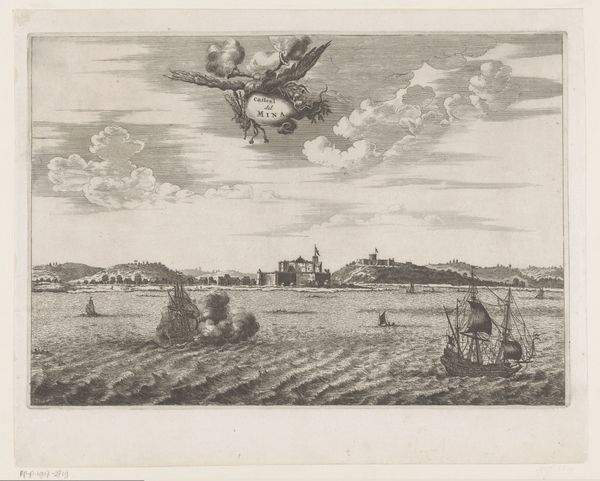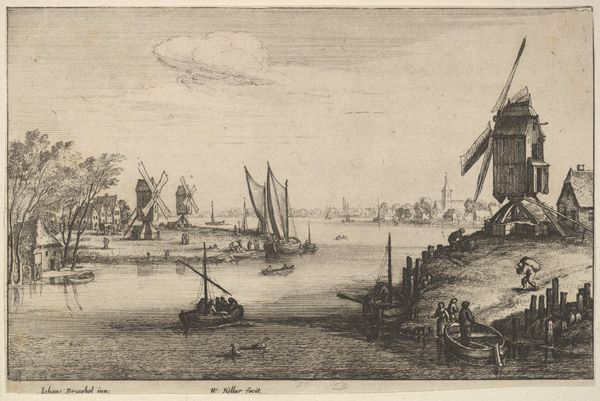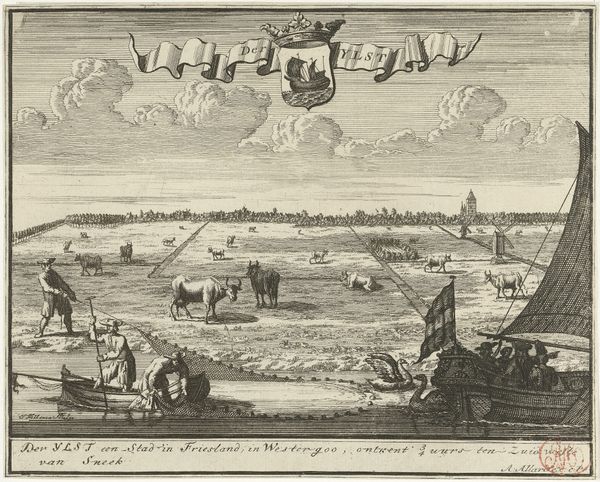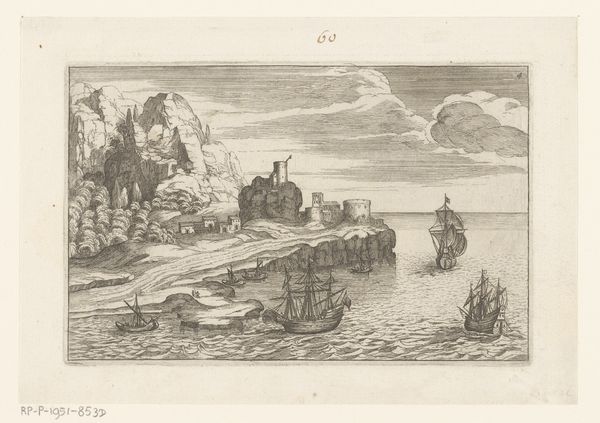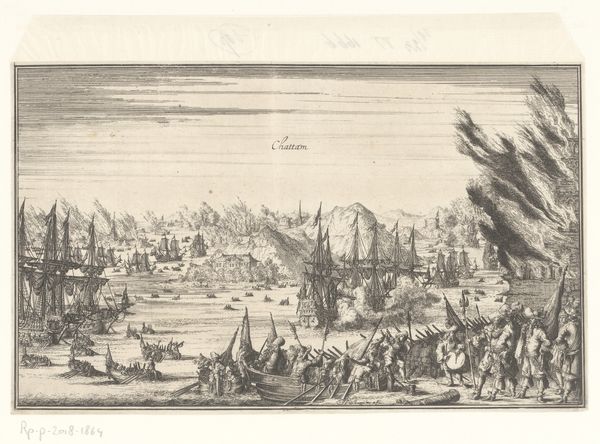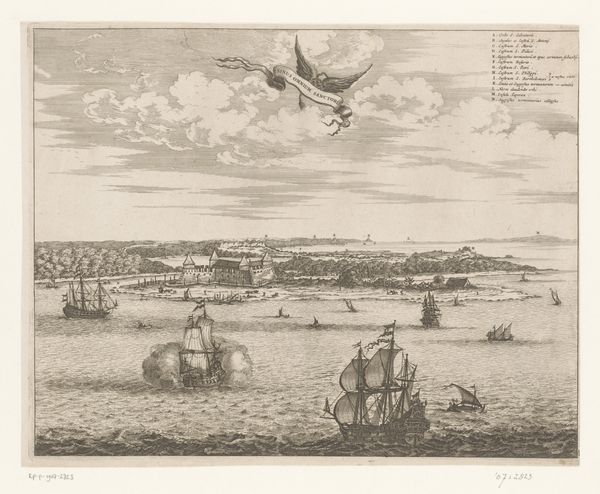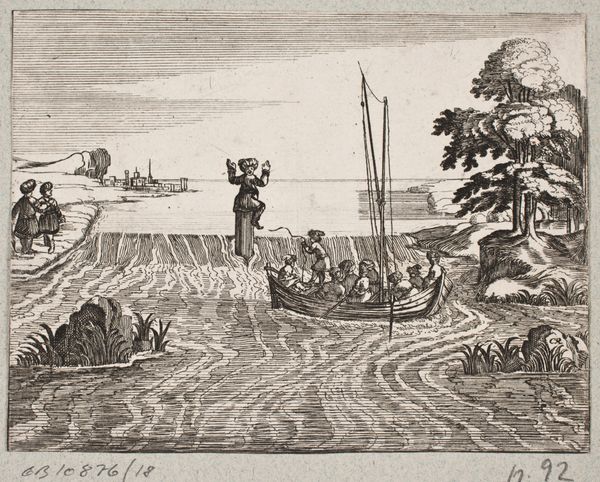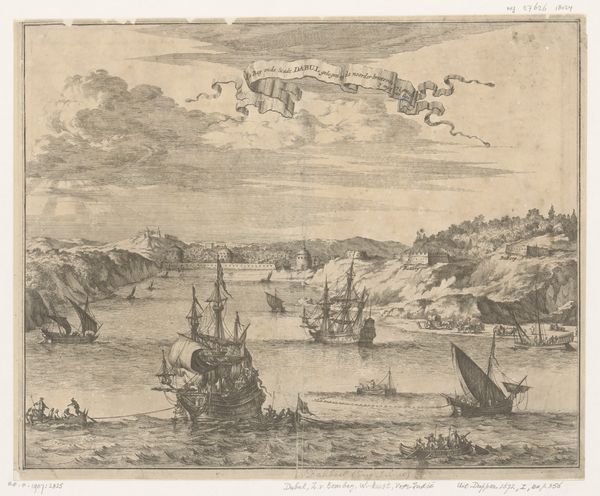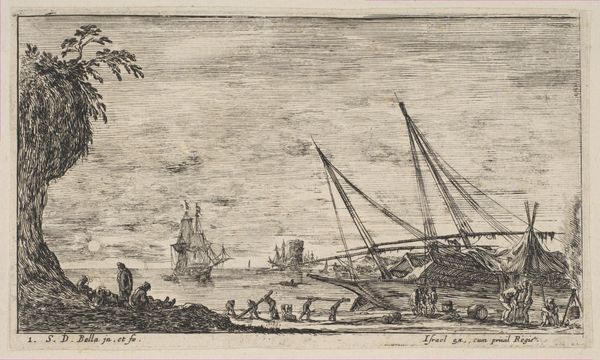
print, etching, engraving
#
baroque
#
dutch-golden-age
# print
#
etching
#
landscape
#
cityscape
#
history-painting
#
engraving
Dimensions: height 248 mm, width 347 mm
Copyright: Rijks Museum: Open Domain
Editor: This is an etching titled "Gezicht op Fort Amsterdam te Ghana vanaf het water," or "View of Fort Amsterdam in Ghana from the Water," dating from around 1668-1670 by an anonymous artist. The image depicts ships firing cannons at a fort on a hill. It feels… celebratory, almost? What do you see in this piece? Curator: Celebratory is one word. I see a visual articulation of power, specifically colonial power during the Dutch Golden Age. Notice how the composition centers the fort, a physical manifestation of European control on the African coast. Editor: Right, the fort is very prominent. Curator: And what about the ships firing cannons? How do you interpret that act of violence depicted so matter-of-factly? We have to remember that this image isn't just a neutral depiction; it's a representation, likely commissioned, to project a specific narrative about Dutch dominance. What does that narrative erase? Editor: Well, immediately I think about the erasure of the indigenous people and their experiences. It frames colonization as this heroic, almost natural event. I suppose seeing it this way makes me very uneasy! Curator: Precisely. By analyzing its historical context, we can understand how art played a role in justifying and perpetuating colonialism. It's a painful reminder that art isn't always innocent; it can be a powerful tool of oppression. Editor: I hadn’t thought of it in such stark terms initially, but viewing it as a historical document that showcases a specific colonial agenda makes the image much more disturbing and complex. Thanks for sharing that perspective. Curator: And thank you for engaging with the discomfort. It is often in that space of discomfort that we find the most potent opportunities for learning and for enacting change.
Comments
No comments
Be the first to comment and join the conversation on the ultimate creative platform.

